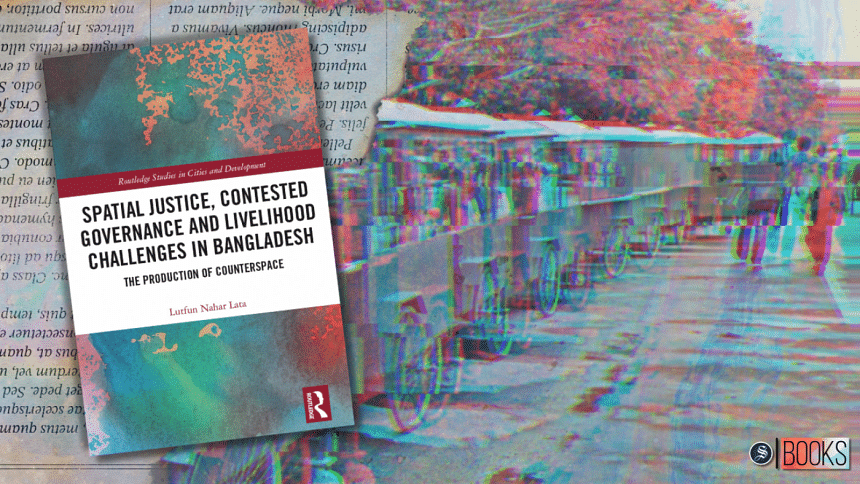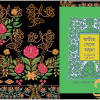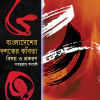Navigating Dhaka’s urban labyrinth

In the labyrinth of Dhaka's bustling streets and crowded alleys, a silent struggle unfolds daily, largely unnoticed by those who pass by in the whirlwind of urban life. In a city where every corner reveals a tale of adversity and tenacity, the urban poor traverse a terrain rife with difficulties, making even the most basic act of moving through public spaces an intimidating undertaking. In the book, Spatial Justice, Contested Governance And Livelihood Challenges In Bangladesh, author Lutfun Nahar Lata sheds light on the many situations that come across Dhaka's marginalised communities as they try to make their space in the city of dreams. With painstaking investigation and moving storytelling, author Lutfun Nahar Lata provides a fascinating examination of the relationship between urbanisation, poverty, and public space in the centre of Bangladesh's capital, painting a vivid picture of the reality experienced by those on the periphery of society.
Lutfun Nahar Lata is a lecturer in Sociology and Social Policy in the School of Social and Political Sciences at the University of Melbourne. She dives into the research of urban marginality, poverty governance, and house and place based disadvantage. She explores the broader ramifications and viewpoints of these societal concerns in her work, while also bringing insight into the sufferings of underprivileged communities.
The book consists of seven chapters in total. Each chapter takes us into a different story to show us the adversity of the given issue.
In the inaugural chapter, we encounter the narrative of Hasan, a food vendor striving to eke out a livelihood through his modest food cart enterprise. Even though Hasan is struggling financially, he exudes a resilient and contented air. He is happy and content in the city, where his meagre income is more than what he could ever hope to earn back in his hometown. But the scenario that we paint in our imagination reading the story is not as simple as it seems. Every now and then, Hasan needs to shift his cart or close his business for different government rules, as what he does isn't necessarily legal. Still, he considers himself fortunate because the reality is even harsher for some others. Amidst the bits and glitters of Dhaka city, stories like Hasan's are often relegated. It takes us to the edge to think whether it is fair for them or not. In a binary world in which black and white are clearly distinguished, the idea of a universal right to obtain one's own food is morally required. But the intrusion of individuals into particular domains initiates a complex investigation and raises questions about the moral limits of these kinds of activities.
Lutfun Nahar Lata skillfully presents the function of the government as the story goes on, making meaningful allusions to a number of other nations and people. Her work thoroughly investigates the divisive question of whether or not people from low-income backgrounds have the right to live in the capital's cities. The book explains the various ways that local law enforcement and government officials exacerbate suffering, making these minority groups' situation worse. Lata provides an in-depth understanding of the frequently disregarded demographic segments of Dhaka through thorough talks and moving real-life tales.
Lutfun Nahar Lata's research on street vendors in Dhaka is unique and invaluable, providing a thorough analysis of the socioeconomic complexities of street vending in a developing city. It highlights the hostile connection that exists between vendors and local government, arguing in favour of more inclusive urban design. The study's ethnographic methodologies yield rich, qualitative insights through compelling personal narratives. As such, it is an indispensable resource for policymakers and urban planners committed to promoting equitable urban environments and supporting the livelihoods of informal sector workers.
Lutfun Nahar Lata's writing is an engaging and thought-provoking read, compelling us to consider the critical issue of urban space allocation. Her prose is both clear and crisp, making complex issues accessible and understandable. Lata skillfully draws attention to the critical need for more egalitarian policies and inclusive urban development through these anecdotes. This study adds significantly to conversations about the informal economy and urban development because of the author's skill at fusing in-depth research with gripping narratives. Lata's research challenges readers to reconsider the dynamics of urban space and the sometimes disregarded socioeconomic nuances of street vending.
Kazi Anika Binte Ataur is a student of North South University.

 For all latest news, follow The Daily Star's Google News channel.
For all latest news, follow The Daily Star's Google News channel. 










Comments